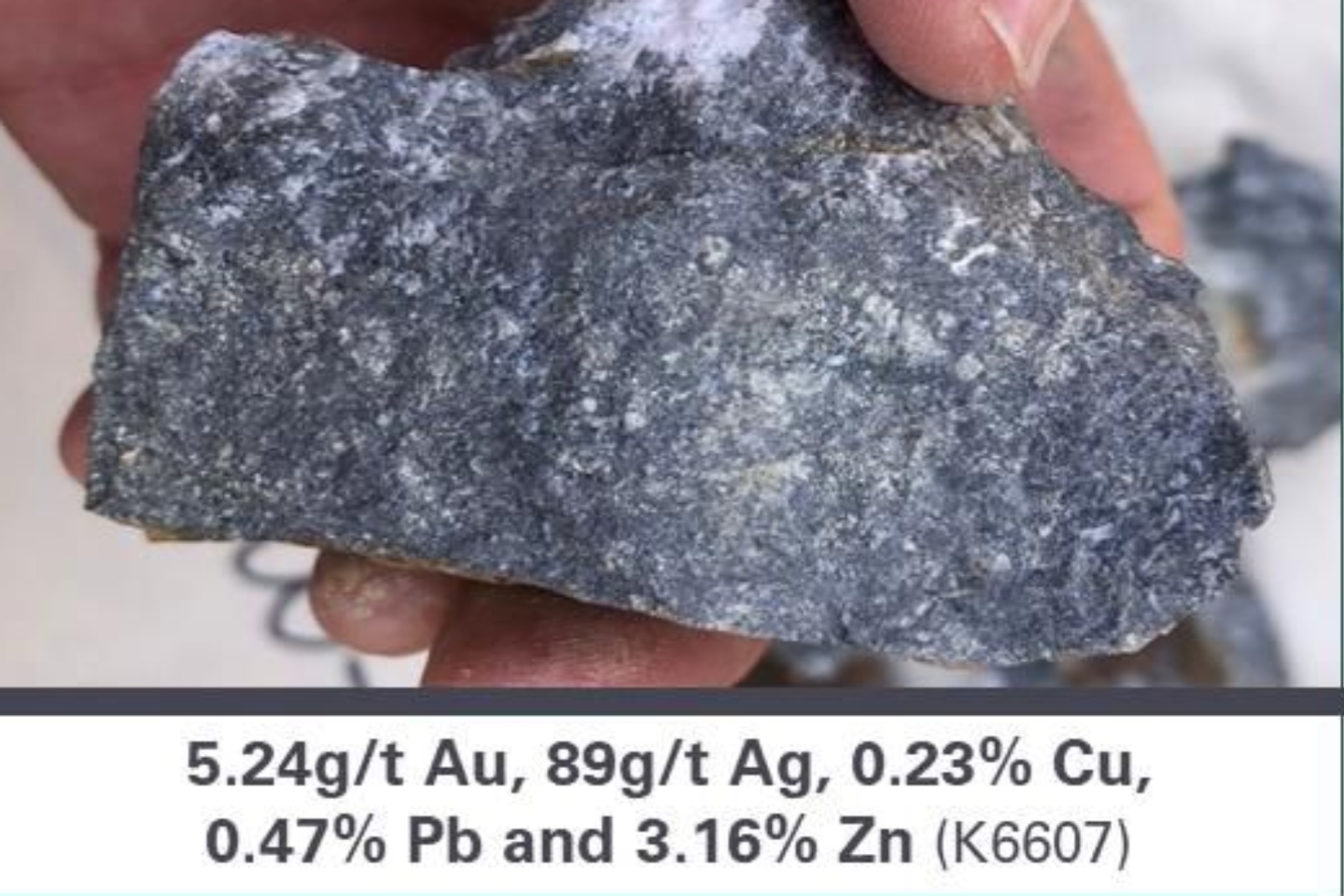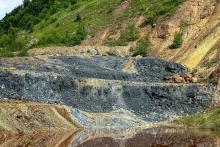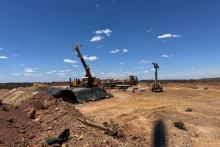Middle Island Resources has launched a maiden, 800m reverse circulation drilling program at its Serbian Bobija polymetallic project, targeting gold-silver-copper-lead-zinc mineralisation below the historic Bobija open pit from which channel sample results are pending. With Bobija rock chip results assaying up to 5.24g/t gold, 120g/t silver, 4.66% zinc and 4.36% lead, the company sees a possible analogue with the 20Mt polymetallic DPM Metals’ Vares project in adjacent Bosnia-Herzegovina.


Middle Island Resources has launched a maiden reverse circulation (RC) drilling program at its much vaunted Bobija polymetallic project in western Serbia, targeting gold-silver-copper-lead-zinc mineralisation beneath the historic Bobija open pit mine.
The campaign represents a milestone in the company's pending acquisition of Konstantin Resources Limited, which owns the asset as part of a broader 620 square kilometre portfolio along Serbia's prolifically mineralised Western Tethyan Belt, a major transcontinental structure.
The structure is a mineral-rich geological zone in Southeast Europe and the Balkans and is well-known for its high potential for gold, copper and other metal deposits. It is part of the larger Tethyan metallogenic belt, a vast collisional zone comprising faults and mountains that extends across parts of Europe, Asia, and Africa.
The Western Tethyan's wealth of deposits, which includes porphyry and epithermal mineralised systems, is linked to its complex tectonic history involving the ancient collision of continental plates and the closure of oceans.
The Phase 1 program, contracted to Drillex International, involves up to 800 metres of drilling across an average of 80m-deep holes, with collar locations strategically placed within the footprint of the Bobija open pit.
Drilling began immediately following the rig's arrival at the site, focussing on the distribution and grade of polymetallic sulphides exposed on the pit floor and referenced in historic underground workings.
The company also anticipates intersections of significant barite mineralisation, which it envisions as potentially adding another value string to its bow.
To complement the drilling, Middle Island recently completed an expanded in-pit channel sampling program, including rock-chip and grab sampling, across exposed barite-sulphide zones.
The work builds on Konstantin's previous limited sampling, which returned standout assays of up to 5.24g/t gold, 120g/t silver, 4.66% zinc, and 4.36% lead.
Middle Island non-executive director Daniel Raihani said: “We are pleased to commence the maiden drilling program at Bobija, one of the key projects in Konstantin’s Serbian portfolio. The Bobija deposit is an under-explored, high-grade, polymetallic deposit with promising, near-surface drilling and rock chip results, is located within a granted mining lease, and is surrounded by a substantial, poorly-tested exploration tenure.”
The new samples – for which results are pending – are aimed at mapping grade distribution, lithological controls and metal relationships with alteration styles, to inform a refined geological model when integrated with historic drilling data.
The Bobija tenure comprises a total area of 208 square kilometres within six granted licences which include the Bobija East and Kamenita Kosa prospects, about 100 kilometres southwest of Belgrade, in a region rich with tier-1 deposits.
Originally explored by the Yugoslav State for barite, lead, and zinc, the site shows strong analogies to the nearby Vares polymetallic mine in Bosnia-Herzegovina.
Developed by Adriatic Metals, the Vares project contains an estimated 20.9Mt at 1.1g/t gold, 153g/t silver, 0.4% copper, 2.8% lead and 4.3% zinc. It was acquired by DPM Metals Inc. in a landmark US$1.25 (A$1.93) billion cash-and-stock deal in September 2025.
A transaction of that magnitude cannot fail to attract attention and underscores the region's appeal for high-grade polymetallic assets, with Middle Island eyeing similar upside possibilities at Bobija amid a wave of M&A activity in the Balkans.
The company’s broader Konstantin acquisition, announced in August, embraces 14 exploration and mining licences across the Bobija, Timok, and Priboj projects, which could fast-track Middle Island’s polymetallic exploration in a world-class copper-gold province.
The deal, described as potentially "transformational" by non-executive director Daniel Raihani, would complement Middle Island’s existing Australian assets, the Ridgelands gold project in Queensland and the Barkly copper-gold project in the Northern Territory, owned through its subsidiary, Barkly Operations.
To fund an accelerated work program, Middle Island raised A$3.4 million through a placement in September, issuing 200 million shares at 1.7c per share.
Results from the company’s initial drilling and channel sampling at Bobija could be the first steps in unlocking Bobija's potential and if all goes according to plan, they could confirm the existence of a Vares-style analogue, which would energise Middle Island ‘s growth in one of Europe's most endowed mineral belts.
When the company first announced the acquisition of its Serbian project, its stock ran hard from 1.7c to 5c today, setting up some anticipation around the first round of drill results. There is nothing quite like the rotary truth diviner delivering the goods.
Is your ASX-listed company doing something interesting? Contact: matt.birney@businessnews.com.au













